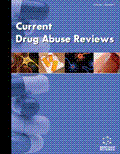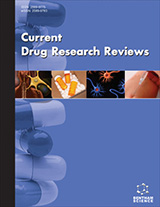Abstract
Background: Research evidence points to the high prevalence of trauma exposure and post traumatic stress among addicted individuals, their families and the professionals responsible for their treatment.
Objective: The purpose of this review is to enhance understanding of the continuing effects of trauma and its impact on the lives of people with addiction problems as well as on the professionals who strive to provide support and care for them. Method: Review of twenty eight articles on traumatic experiences in individuals and families facing addiction problems as well as on traumatic stress in addiction professionals. Eligibility criteria were: publication in a peer-reviewed journal dating from 1990 to present; articles written in the English language; quantitative or qualitative design aiming to explore the lived experience of trauma and the recovery process from it. Results: It is argued that for service providers to be able to help patients restore purpose and meaning in the recovery process, it is important to be aware of the trauma dynamics implicated in the long history of the addiction problems. Professionals’ difficulty to process their emotions may lead to disengagement or overinvolvement and the adoption of maladaptive roles. Strong and unexpected emotional reactions in the professional may be a clue to the presence of masked trauma. Conclusion: Ongoing training on trauma dynamics, self-care and clinical supervision may deepen professionals’ understanding of the impact of trauma on their work culture and protect them from the risk of secondary traumatic stress.Keywords: Addiction, families, post-traumatic stress disorder, professionals, secondary post-traumatic stress, trauma.
Current Drug Abuse Reviews
Title:Cultivating a Trauma Awareness Culture in the Addictions
Volume: 9 Issue: 2
Author(s): Evdokia Missouridou*
Affiliation:
- Lecturer in Mental Health Nursing, Nursing Department, Technological Educational Institute, Athens,Greece
Keywords: Addiction, families, post-traumatic stress disorder, professionals, secondary post-traumatic stress, trauma.
Abstract: Background: Research evidence points to the high prevalence of trauma exposure and post traumatic stress among addicted individuals, their families and the professionals responsible for their treatment.
Objective: The purpose of this review is to enhance understanding of the continuing effects of trauma and its impact on the lives of people with addiction problems as well as on the professionals who strive to provide support and care for them. Method: Review of twenty eight articles on traumatic experiences in individuals and families facing addiction problems as well as on traumatic stress in addiction professionals. Eligibility criteria were: publication in a peer-reviewed journal dating from 1990 to present; articles written in the English language; quantitative or qualitative design aiming to explore the lived experience of trauma and the recovery process from it. Results: It is argued that for service providers to be able to help patients restore purpose and meaning in the recovery process, it is important to be aware of the trauma dynamics implicated in the long history of the addiction problems. Professionals’ difficulty to process their emotions may lead to disengagement or overinvolvement and the adoption of maladaptive roles. Strong and unexpected emotional reactions in the professional may be a clue to the presence of masked trauma. Conclusion: Ongoing training on trauma dynamics, self-care and clinical supervision may deepen professionals’ understanding of the impact of trauma on their work culture and protect them from the risk of secondary traumatic stress.Export Options
About this article
Cite this article as:
Missouridou Evdokia*, Cultivating a Trauma Awareness Culture in the Addictions, Current Drug Abuse Reviews 2016; 9 (2) . https://dx.doi.org/10.2174/1874473710666170111102835
| DOI https://dx.doi.org/10.2174/1874473710666170111102835 |
Print ISSN 1874-4737 |
| Publisher Name Bentham Science Publisher |
Online ISSN 1874-4745 |
 33
33 2
2 2
2Related Articles
-
MicroRNAs in Arterial Hypertension
Current Topics in Medicinal Chemistry Intervertebral Disc and Nucleus Replacement Devices and Instrumentations
Recent Patents on Biomedical Engineering (Discontinued) Future Prospects in Anti-Platelet Therapy: A Review of Potential P2Y12 and Thrombin Receptor Antagonists
Recent Patents on Cardiovascular Drug Discovery COXIBs, CINODs and H2S-Releasing NSAIDs: Current Perspectives in the Development of Safer Non Steroidal Anti-Inflammatory Drugs
Current Medicinal Chemistry Leptin and Vascular Smooth Muscle Cells
Current Pharmaceutical Design Twin-to-Twin Transfusion Syndrome: Diagnosis and Treatment
Current Women`s Health Reviews Models to Study Atherosclerosis: A Mechanistic Insight
Current Vascular Pharmacology Liver X Receptors: Potential Novel Targets in Cardiovascular Diseases
Current Drug Targets - Cardiovascular & Hematological Disorders Recent Patents in Imaging of the Vulnerable Atherosclerotic Plaque: The Search for the Holy Grail
Recent Patents on Medical Imaging Update on the Pathophysiological Role of Intracellular Signaling Pathways in Atherosclerotic Plaques and Ischemic Myocardium
Current Signal Transduction Therapy Prognostic Significance of Homocysteine Levels in Acute Ischemic Stroke: A Prospective Cohort Study
Current Neurovascular Research The Complementary Roles of Imaging and ‘Omics’ for Future Anti-Atherosclerotic Drug Development
Current Pharmaceutical Design Visfatin/PBEF and Atherosclerosis-Related Diseases
Current Vascular Pharmacology The potential for circulating microRNAs in the diagnosis of myocardial infarction: a novel approach to disease diagnosis and treatment
Current Pharmaceutical Design Statins: Are They All the Same?
Current Drug Therapy The Role of Scaffolding in Standard Mechanism Serine Proteinase Inhibitors
Protein & Peptide Letters Anti-Inflammatory Approaches to Reduce Acute Cardiovascular Events: Not Only Benefits
Current Pharmaceutical Biotechnology Matrix Metalloproteinase Inhibitors as Prospective Agents for the Prevention and Treatment of Cardiovascular and Neoplastic Diseases
Current Topics in Medicinal Chemistry Pyrazine Functionalized Ag(I) and Au(I)-NHC Complexes are Potential Antibacterial Agents
Current Medicinal Chemistry Diabetic CVD – Focus on Vitamin D
Cardiovascular & Hematological Agents in Medicinal Chemistry
















